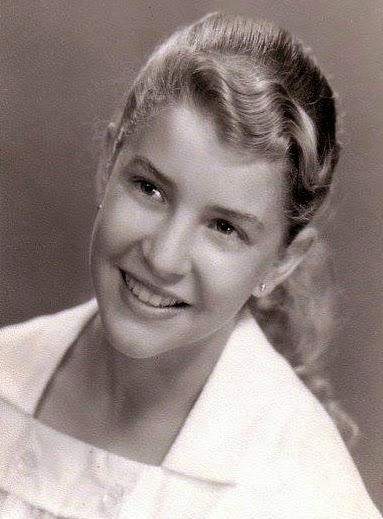IS THAT ALL THERE IS?
PEGGY LEE
SONGWRITERS: JERRY
LEIBER & MIKE STOLLER
COUNTRY: U. S. A.
ALBUM:
LABEL: CAPITOL RECORDS
GENRE: VOCAL JAZZ
YEAR: 1969
Is That All There Is? is a 1969 studio album by Peggy Lee,
featuring arrangements by Randy Newman.
The eponymous title track won Lee the Grammy Award for Best Contemporary Vocal Performance,
Female at the 12th Grammy Awards.
Norma Deloris Egstrom (May 26, 1920 – January
21, 2002), known professionally as Peggy Lee, was an American jazz and popular music singer, songwriter, composer, and actress, over a career spanning
six decades. From her beginning as a vocalist on local radio to singing with Benny Goodman's big
band, Lee created a sophisticated persona, writing music for films, acting, and
recording conceptual record albums combining poetry and music.
Lee was born Norma Deloris Egstrom in Jamestown,
North Dakota, on May 26, 1920, the seventh of
the eight children of Selma Amelia (née Anderson) Egstrom and Marvin Olof
Egstrom, a station agent for the Midland
Continental Railroad. Her family and she were Lutherans. Her father
was Swedish-American and her mother was Norwegian-American. After her mother
died when Lee was four, her father married Minnie Schaumberg Wiese.
Lee first sang professionally over KOVC radio in Valley City,
North Dakota. She later had her own series on
a radio show sponsored by a local restaurant that paid her salary in food. Both during and after her
high-school years, Lee sang for small sums on local radio stations.
Radio personality Ken Kennedy, of WDAY in Fargo (the most widely heard station in North Dakota), changed her name to
Peggy Lee. Lee left home and traveled to Los Angeles at the age of 17.
She returned to North Dakota for a tonsillectomy, and was
later noticed by hotel owner Frank Bering while working at the Doll House in Palm Springs,
California. Here, she developed her
trademark sultry purr, having decided to compete with the noisy crowd with
subtlety rather than volume. Bering offered her a gig at the Buttery Room, a nightclub in the
Ambassador Hotel East in Chicago. There, she was noticed by bandleader Benny
Goodman. According to Lee, "Benny's then-fiancée, Lady Alice Duckworth,
came into the Buttery, and she was very impressed. So the
next evening, she brought Benny in, because they were looking for a replacement
for Helen Forrest. And although I didn't know, I was
it. He was looking at me strangely, I thought, but it was just his preoccupied
way of looking. I thought that he didn't like me at first, but it just was that
he was preoccupied with what he was hearing." She joined his band in 1941
and stayed for two years.
I remember when I was
a very little girl, our house caught on fire
I'll never forget the look on my father's face as he gathered me up
In his arms and raced through the burning building out to the pavement
I stood there shivering in my pajamas and watched the whole world go up
in flames
And when it was all over I said to myself: Is that all there is to a
fire?
Is that all there is,
is that all there is
If that's all there is my friends, then let's keep dancing
Let's break out the booze and have a ball
If that's all there is
And when I was 12 years old, my father took me to the circus, the
greatest show on Earth
There were clowns and elephants and dancing bears
And a beautiful lady in pink tights flew high above our heads
And as I sat there watching the marvelous spectacle
I had the feeling that something was missing
I don't know what, but when it was over
I said to myself: Is that all there is to a circus?
Is that all there is,
is that all there is
If that's all there is my friends, then let's keep dancing
Let's break out the booze and have a ball
If that's all there is
Then I fell in love,
with the most wonderful boy in the world
We would take long walks by the river or just sit for hours gazing into
each other's eyes
We were so very much in love
Then one day, he went away. And I thought I'd die, but I didn't
And when I didn't I said to myself: Is that all there is to love?
Is that all there is,
is that all there is
If that's all there is my friends, then let's keep dancing
I know what you must
be saying to yourselves
If that's the way she feels about it why doesn't she just end it all?
Oh, no, not me! I'm
in no hurry for that final disappointment
For I know just as well as I'm standing here talking to you
When that final moment comes and I'm breathing my lst breath, I'll be
saying to myself
Is that all there is,
is that all there is
If that's all there is my friends, then let's keep dancing
Let's break out the booze and have a ball
If that's all there is.





